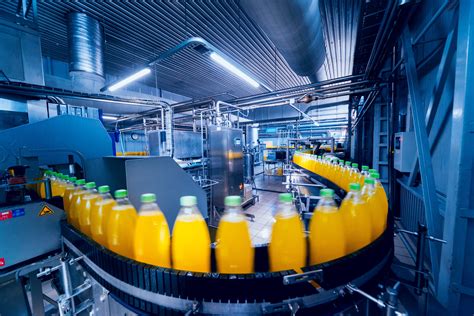A Comprehensive Overview of the Food and Beverage Industry
The food and beverage (F&B) industry is a vast and dynamic sector encompassing the production, processing, distribution, and sale of food and beverages for human consumption. It's a crucial part of the global economy, influencing everything from agriculture and manufacturing to retail and hospitality. This overview will explore the key aspects of this multifaceted industry.
Key Segments of the Food and Beverage Industry
The F&B industry can be broadly categorized into several key segments:
1. Food Production:
This segment involves the cultivation, harvesting, and raising of raw ingredients. This includes:
- Agriculture: Farming, livestock rearing, and aquaculture. This is the foundation of the entire industry.
- Fishing and Seafood: Harvesting of various aquatic species for consumption.
- Food Processing: Transforming raw materials into finished products through various techniques like preserving, packaging, and value-adding. This encompasses a huge range of sub-sectors.
2. Food Manufacturing:
This stage transforms raw materials and processed ingredients into packaged consumer products. This involves:
- Food Manufacturing Plants: Large-scale operations involved in producing packaged food items, including snacks, beverages, dairy products, canned goods, and more.
- Quality Control: Ensuring product safety and adherence to regulations.
- Packaging and Distribution: Preparing products for retail sale and getting them to market effectively.
3. Food Service:
This segment involves the preparation and serving of food and beverages to consumers. Key areas include:
- Restaurants: Including fast-food chains, casual dining establishments, and fine-dining restaurants.
- Catering: Providing food services for events and functions.
- Hotels and Hospitality: Integrated food and beverage services within accommodation facilities.
4. Food Retail:
This segment focuses on the sale of food and beverages to consumers. This encompasses:
- Grocery Stores: Supermarkets, hypermarkets, convenience stores.
- Specialty Food Stores: Retailers focusing on specific food categories, such as organic products or ethnic foods.
- Online Grocery Delivery: The rapidly growing segment of e-commerce in the food sector.
5. Beverage Production:
This sector involves the manufacturing and distribution of non-alcoholic and alcoholic drinks:
- Soft Drinks: Carbonated drinks, juices, and bottled water.
- Alcoholic Beverages: Beer, wine, spirits – a complex sector with significant global reach.
Major Trends Shaping the Food and Beverage Industry
Several significant trends are reshaping the F&B landscape:
- Health and Wellness: Growing consumer demand for healthy, nutritious, and functional foods and beverages.
- Sustainability: Increasing focus on environmentally friendly practices throughout the supply chain.
- Convenience: The demand for quick and easy meal solutions and ready-to-eat products.
- Globalization: The increasing international trade of food and beverages.
- Technological Advancements: Automation, robotics, and data analytics are transforming production processes.
- E-commerce and Delivery Services: The rise of online grocery shopping and food delivery platforms.
Challenges and Opportunities
The F&B industry faces various challenges, including supply chain disruptions, fluctuating commodity prices, stringent regulations, and intense competition. However, it also presents significant opportunities for innovation and growth through the adoption of new technologies, sustainable practices, and catering to evolving consumer preferences.
Conclusion
The food and beverage industry is a complex ecosystem with diverse segments, significant economic impact, and a constantly evolving landscape. Understanding its various facets is crucial for navigating this essential sector and recognizing the abundant opportunities it provides. By adapting to evolving consumer demands and embracing sustainable practices, the F&B industry will continue to thrive and play a vital role in feeding the world.
